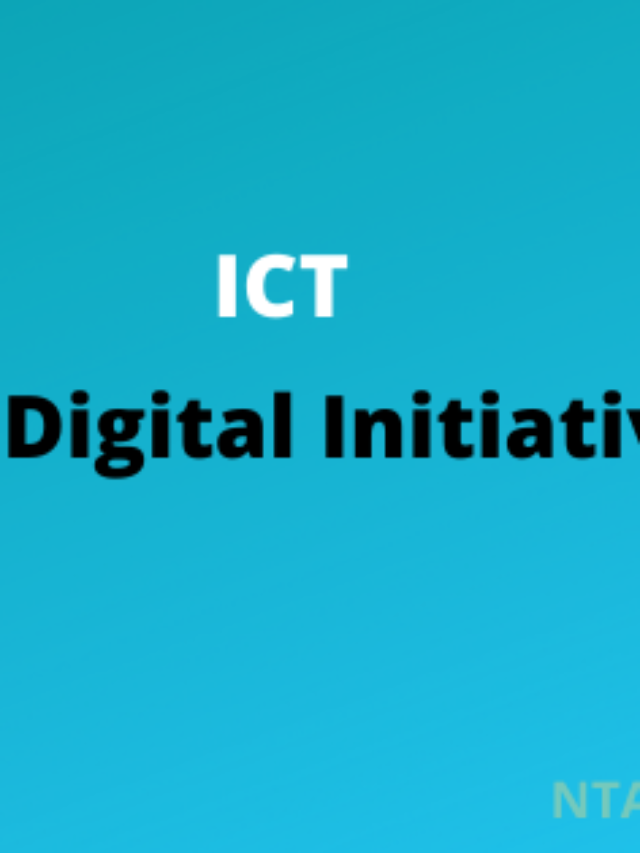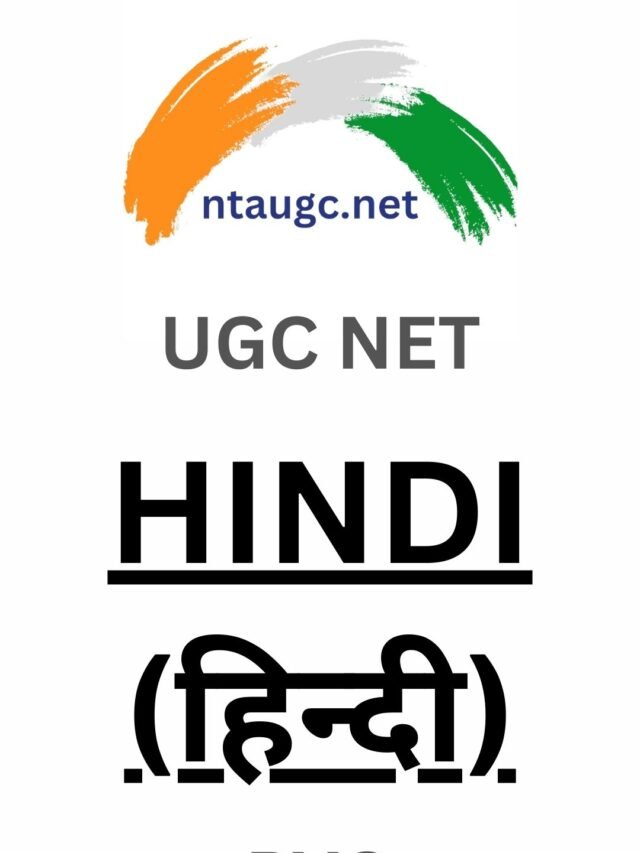It is not enough for a NET / JRF candidate to know the answer to the previous year’s question (PYQ) of Teaching Aptitude (Evaluation system). It becomes very important for you to know the “how and why” along with the answer to the question of those previous years.
Here we have tried to do the same. We have not only answered the previous year’s questions (PYQ) of the Evaluation system but have also tried to solve the related points by explaining them well so that you can not only solve these questions but also solve the related questions easily.
Teaching aptitude (Evaluation system) Previous Year Questions with answer
Which of the following is not true in the context of the purpose of evaluation.
- To make reliable decisions
- To identify problems
- To determine the effectiveness of teaching techniques
- To develop sense of free in students
Solution:
Evaluation is a systematic process of collecting and analyzing data to determine whether, and to what degree, objectives have been, or are being, achieved. It leads to decision-making. The purpose of the evaluation is to make a judgment about the quality or worth of something.
Key-Points
The Purposes of evaluation are-
• to determine the relative effectiveness of the program in terms of students’ behavioral output.
• to make reliable decisions about educational planning.
• to ascertain the worth of time, energy, and resources invested in a program.
• to identify students’ growth or lack of growth in acquiring desirable knowledge, skills, attitudes and societal values.
• to help teachers to determine the effectiveness of their teaching techniques and learning materials.
• to help motivate students to learn more as they discover their progress or lack of progress in given tasks.
• to encourage students to develop a sense of discipline and systematic study habits.
• to provide educational administrators with adequate information about teachers’ effectiveness and school need.
• to acquaint parents or guardians with their children’s performance.
• to identify problems that might hinder or prevent the achievement of set goals.
Thus from the above-mentioned points, it is clear that to develop a sense of free in students is not correct.
Q2: Continuous and comprehensive Evaluation mainly aims at promoting.
- Competition among children
- Competition among teachers
- Academic excellence among children
- Inclusive education
Solution
Continuous and Comprehensive Evaluation, commonly know as ‘CCE’ has been introduced as a school-based system of evaluation by the CBSE in 2009 with the enactment of the Right to Education Act.
• Continuous and comprehensive Evaluation mainly aims at promoting Inclusive education.
CCE can be incorporated in the inclusive classroom while engaging in teaching through a variety of activities.
• Incorporating strategies for attending to diverse needs in classrooms would be particularly useful in developing CCE processes for the classroom.
Key-Points
Aims of CCE:
• Emphasizing continuity and regularity of assessment.
• Assessing both scholastic and co-scholastic aspects of a child’s growth.
• Emphasize the thought process and de-emphasize memorization as CCE includes all aspects of students’ development.
• Recording the methods of learning to make the required improvements
• Making evaluation an integral part of learning through diagnostic and remedial teaching.
• Evaluating child comprehensively rather than focus only on cognitive or intellectual functioning.
• Ensuring all-round development of students including cognitive, psychomotor, and affective domains.
• Evaluate every aspect of the child during their presence at the school.
• Developing a student’s cognitive, psychomotor, and affective domains.
• Assessing both scholastic and co-scholastic aspects of a child’s growth.
• Evaluation of the interest of the child during their presence at the school.
• Observing and recording the methods of learning to make improvements.
Hence, we can conclude that Continuous and comprehensive Evaluation mainly aims at promoting Inclusive education.
Q.Which devices from the list given below will form part of formative evaluation? Give your answer by selecting from the code.
(a) Conducting a quiz session
(b) Giving multiple-choice type question in post – instructional sessions
(C) Giving a mastery test
(d) Providing corrective feedback during discussions
(e) Encouraging opportunity for metacognitive thinking
(f) Grading students performance on a five-point scale
- (a), (b) and (c)
- (a), (d) and (e)
- (d), (e) and (f)
- (b), (c) and (d)
Solution
Evaluation is done in different phases of the teaching-learning process. It can be done by assessing the learner before the beginning of the teaching-learning process, during the teaching-learning process, and at the end of the instructional process.
Key-Points
Following are the broad two types of evaluation
1. Formative Evaluation
• It is conducted during the instructional process.
• It is conducted to know the mastery in content.
• The purpose is to monitor the learning progress of the learner.
• It helps the learner to actively and continuously engage in learning in a non-threatening and supportive environment.
• It provides a chance for the learner to reflect on their performances and scope for improvement.
• It provides feedback to students and teachers for effective learning.
• It is a diagnostic and remedial, formal, and informal approach of assessment.
• The questionnaire, observation schedule, interview, checklist, rating scale are some of the tools used in formative evaluation.
• Quizzes, creative activities or discussions on topics that increase metacognitive awareness,
• Examination, assignments, projects, quizzes, and competitions, group discussions are some of the techniques used in formative evaluation.
2. Summative Evaluation
• It is conducted at the end of the instructional process in a term, a course, or a school session.
• conducted certify the learner and judging their learning standards.
• It focuses mostly on assessing the scholastic abilities of the children.
• It ‘Sums-up’ how much a student has learned over a period of time.
• It is a mostly structured and formal approach to the assessment of learning.
• It provides terminal feedback, both, to the teacher and the learner to enhance teaching and learning.
• Written tests and pencil tests are the methods to conduct the summative evaluation.
Hence, conducting a quiz session, providing corrective feedback, and encouraging opportunities for metacognitive thinking will form part of formative evaluation.
Consider the following:
- i) Principle of economy
- ii) Principle of flexibility
- iii) Principle of variety
- iv) Principle of functionality
The three principles of CCE are
- (i), (ii) and (iii)
- (i), (ii) and (iv)
- (i), (iii) and (iv)
- (ii), (iii) and (iv)
Solution
Continuous and Comprehensive Evaluation(CCE):
• CCE refers to a school-based evaluation, which covers all aspects of school activities related to a child’s development.
• It emphasizes two fold objectives such as continuity of evaluation and assessment of learning outcomes in a comprehensive manner.
• It covers all the domains of learning i.e. cognitive, affective, and psychomotor domains. It treats evaluation as a developmental process.
• Evaluation in the cognitive domain is associated with the evaluation of cognitive abilities such as knowledge, understanding, application, etc.
Key-Points
Principles of CCE are:
• Principle of Functionality: CCE should be functional, it should be designed in a scientific way.
• Principle of Variety: CCE should be performed with various methods according to the requirement of the evaluation process.
• Principle of Flexibility: The scheme of CCE has inbuilt flexibility for schools to plan their own academic schedules as per specified guidelines on CCE.
Hence, it could be concluded that the three principles of CCE are Principles of Flexibility, Variety, and Functionality.
One of the purposes of evaluation of learners is
- assessment of textbooks
- preparing a list of learners needs
- assessment of the learner’s attainment
- identification of language functions
Solution:
Evaluation is a systematic process of collecting, analyzing, and interpreting evidence of students’ progress and achievement.
• Continuous evaluation is required in teaching for successful learning. It needs to be integrated with the process of teaching and learning.
• It is a continuous process of making value judgments based on both qualitative and quantitative data collected over a period of time.
Key-Points
Purposes of Evaluation:
• To find and diagnose learner’s learning needs for effective learning.
• To determine the effectiveness of the learning process or program.
• Assessment of learner’s attainment is one of the purposes of evaluation of learners as it focuses on evaluating learner’s achievement and bringing improvement for meaningful learning.
• To improve academic achievements and students’ motivation level.
Hence, from the above-mentioned points, it becomes clear that the assessment of the learner’s attainment is one of the purposes of the evaluation of learners.
Highly reliable test is
- objective type
- essay type
- true and false
- none of these
Solution:
Test reliability refers to the degree to which a test is consistent and stable in measuring what it is intended to measure. For example, a test measuring personality traits should yield the same answers for a subject after several times completing the test.
Objective Type Test: It consists of multiple-choice questions that are used to measure educational achievement, intelligence, etc. These tests are highly reliable and valid as they require a one-word answer thus minimize the subjective inference and judgment.
Characteristics of Objective Tests:
• It prevents bluffing
• Apt for definite and answer
• Reliable and valid content
• Easy and consistent scoring
• Avoids the influence of writing skills
NOTE:
Essay type Test
It used to measure learner’s ability of writing answers in a sentence or paragraph.
True and False Type Test
It used to measure learner’s ability of determining whether a statement is true or not.
Objective Type Test
It is used to select the correct answer among several alternative answers.
Hence, from the above-mentioned points, it becomes clear that objective type tests are highly reliable.
Which of the following is/are example(s) of norm-referenced evaluation?
1. Mohit like to play Cricket than Football
II. Saurabh is more intelligent than this group of boys
III. Sheena gets the least marks in the class
IV. Ravi likes ice cream most
Only I and III
Only II and IV
Only I and II
Only II and III
Solution
Evaluation is an integral part of any teaching and learning process. Teachers make use of a variety of evaluation methods to make a judgment regarding students’ performance.
Norm-referenced Evaluation:
• A norm can be thought of as a standard or level of performance for a particular group.
• It is a relative type of evaluation i.e. by comparing a student’s score to the norm, one can determine if the score is above or below the average of the group. So, scores of students become meaningful in relation to the scores of other students.
• They are useful in measuring the overall achievement of students.
• It also helps to determine the students who scored high or the students who secured the least scores.
• Competitive exams such as Bank exams, IQ tests are all examples of norm-referenced evaluation.
Hence, the norm-referenced form of evaluation helps in determining the scores of students in comparison to others. so Only II and III is correct
An examination that is a part of ongoing and periodical evaluation is:
- Continuous Evaluation
- Comprehensive Evaluation
- Diagnostic Evaluation
- None of the above
Solution:
Evaluation is an integral part of any teaching and learning process. Both teaching and evaluation are based on the instructional objectives which provide direction to them.
Continuous and Comprehensive Evaluation (CCE) is a school-based evaluation system as per Right of Children to Free and Compulsory Education Act, 2009 (RTE Act, 2009) which was implemented in April 2010
1. The ‘Continuous’ aspect of CCE:
• It means an ongoing and periodical assessment which will help in finding out the strengths and gaps in children’s learning so that the teacher can plan on ways to enhance learning.
• The ongoing aspect includes the placement and formative evaluation, where placement evaluation means assessment of learners’ progress on various aspects from the very beginning of instructions and formative evaluation means the evaluation of learners during the instructional process through various formal or informal methods of evaluation.
• The periodicity aspect includes the summative evaluation which is the evaluation of the performance of learners should be done frequently at the end of every unit or term.
2. The Comprehensive’ aspect of CCE:
• It implies that the evaluation of learners’ performance is carried out in both scholastic and co-scholastic areas.
• Scholastic areas cover activities in curricular or subject-specific areas. The term ‘Scholastic’ refers to those activities, which are related to intellect or the brain.
• Co-scholastic areas include life skills, abilities in co-curricular areas, attitudes and values.
Hence, as you can see from the points above, the ongoing and periodical part comes under the continuous’ aspect of CCE.
In order to monitor students’ progress and to modify teaching accordingly, the best method of evaluation is :
- formative evaluation
- summative evaluation
- qualitative evaluation
- objective-based evaluation
Solution:
Evaluation refers to a process of making value judgments based on both qualitative and quantitative data collected over a period of time. CCE describes two different types of evaluation which include ‘formative’ and ‘summative’ evaluation.
‘Formative evaluation’ is a type of evaluation that refers to monitor the child’s progress throughout the teaching-learning process. Oral testing, anecdotal records, portfolios, class test, etc are the tools of formative evaluation.
Key-Points
Formative evaluation is conducted during the teaching-learning process as it emphasizes:
• identifying the learning difficulties of students during the instructional procedure.
• improving students’ academic achievements and encouraging motivation levels.
• diagnosing and removing the learning difficulties of students with appropriate strategies.
• enhancing students’ learning experiences and identifying deficiencies in the teaching process and modifying it.
Therefore, To monitor students’ progress and to modify teaching accordingly, the best method of evaluation is formative evaluation.
NOTE: Summative evaluation refers to a type of evaluation that measures, certifies, and reports the level of student learning by assessing them at the end of the session or unit.
Additional Information
1. Qualitative Evaluation: Qualitative evaluation approaches focus on exploring the experiences, perspectives, and opinions of those involved. They can help us understand what an art activity or process ‘means’ to participants. They can be illuminating about other subjective elements such as project delivery.
2. Objective-based evaluation: Objectives-based evaluation refers to a class of evaluation approaches that centers on the specification of objectives and the measurement of outcomes.
Important Notes
Evaluation is done in different phases of the teaching-learning process. It can be done by assessing the learner before the beginning of the teaching-learning process, during the teaching-learning process and at the end of the instructional process
Following are the different types of evaluation:
Formative Evaluation
• It is conducted during the instructional process.
• It is conducted to know the mastery in content.
• The purpose is to monitor the learning progress of the learner.
• It helps the learner to actively and continuously engage in learning in a non-threatening and supportive environment.
• It provides a chance for the learner to reflect on their performances and scope for improvement.
• It provides feedback to students and teachers for effective learning.
• It is a diagnostic and remedial, formal, and informal approach of assessment.
• The questionnaire, observation schedule, interview, checklist, rating scale are some of the tools used in formative evaluation.
• Examination, assignments, projects, quizzes, and competitions, group discussions are some of the techniques used in formative evaluation.
Summative Evaluation
• It is conducted at the end of the instructional process in a term, a course or a school session.
• It is conducted to certify the learner and judging their learning standards.
• mostly on assessing the scholastic abilities of the children.
• It ‘Sums-up’ how much a student has learned over a period of time.
• It is a mostly structured and formal approach to the assessment of learning.
• It provides terminal feedback, both, to the teacher and the learner to enhance teaching and learning.
• Written test and pencil test are the methods to conduct the summative evaluation.
Norm-referenced Evaluation
• It is conducted at the end of a term, naturally school board examinations.
• Standardized tests are used in this type of evaluation.
• It is conducted to know the relative position rank of the students in a well-defined population or group.
• Students are compared in a group or population.
• It is used to ascertain an individual’s status with respect to the performance of other individuals on that test.
• There is no fixed instructional objective.
• The importance is given to the course objectives.
Criterion-referenced Evaluation
• It is conducted during the progress of instruction like class tests and examinations
• Teacher- made tests are used in this type of evaluation.
• It is conducted to know the performance of an individual in a well-defined learning task.
• Students are not compared, only the standard of a student can be defined in a relation to a learning task.
• It is used to ascertain an individual’s status with respect to a defined achievement domain.
• Specific instructional objectives are developed as a standard.
Hence the best method of evaluation is a formative evaluation











